Jimc
Member
- 726
- 9
- 18
- Location
- Mullica, nj
quite awhile back i picked up two of those distribution panels that surplus center has for sale at about $8ea. i have been wanting to do something with at least one of them so i finally ordered up a few parts so i can put one to use if i ever have the need. i see some guys mount them to the generator but i decided to put mine on a 50ft piece of milspec 10/4 SO cord that i grabbed on the big auction site. this way if i was to ever use the 002 or 003 on say a jobsite or to power some tools then it can sit a distance away and you can still plug in. so here is what i did.....
first i picked up this nice plain metal hubble box. it measures 12 x 8 x 4. ran me about $29 shipped. the part # is in the one pic.
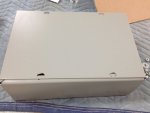
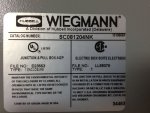
i ordered a waterproof cord grip and some rubber feet from mcmaster carr. the cord grip is pt# 69915k72 and the rubber feet were pt# 9540k28. if anyone decides to do this in the future keep in mind the cord grip size may vary depending on the diameter of the cable you are using. you may need to choose one of a different size.
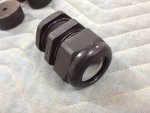
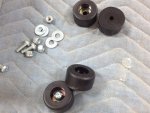
i took a hole saw and drilled a hole to accept the cord grip. holes were already in the bottom of the box for the feet. originally meant to mount to a wall im sure. with the feet bolted in place and cord grip tightened i slipped about 12" of the cord through the grip and tightened it down.
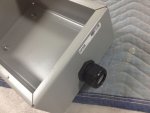
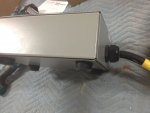
now i opened up the surplus center panel, cut the wires going to the connection block and took the plastic back off. there is a plastic pin on each corner of the mounting flange. i clipped them off and sanded them smooth to remove them 100%. now i took the flat cover panel for the hubble box and cut a square hole in it so the panel would drop in place. around the plastic panel flange i drilled and countersunk 6 small holes to accept some #6x1/2" ss sheetmetal screws. i applied some black urethane sealant around the flange, put it in place on the metal panel and screwed it together. you can use silicone if you want. the urethane stuff is a harder rubber and way higher strength bond. basically the same stuff they set your windshield in your car with. once all that was done i wired the panel up to the cord. the color code for the panel is: blue and grey are hot legs, red and black neutral and the yellow with green tracer is ground.
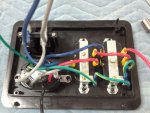
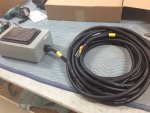
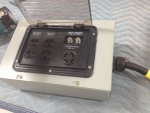
there you have it! a good way to spend 15 times more money than you spent on the original panel itself lol. actually all together including the cord and the panel i might have $170 in the whole deal. the cable is the real expensive part. wire aint cheap anymore.
first i picked up this nice plain metal hubble box. it measures 12 x 8 x 4. ran me about $29 shipped. the part # is in the one pic.


i ordered a waterproof cord grip and some rubber feet from mcmaster carr. the cord grip is pt# 69915k72 and the rubber feet were pt# 9540k28. if anyone decides to do this in the future keep in mind the cord grip size may vary depending on the diameter of the cable you are using. you may need to choose one of a different size.


i took a hole saw and drilled a hole to accept the cord grip. holes were already in the bottom of the box for the feet. originally meant to mount to a wall im sure. with the feet bolted in place and cord grip tightened i slipped about 12" of the cord through the grip and tightened it down.


now i opened up the surplus center panel, cut the wires going to the connection block and took the plastic back off. there is a plastic pin on each corner of the mounting flange. i clipped them off and sanded them smooth to remove them 100%. now i took the flat cover panel for the hubble box and cut a square hole in it so the panel would drop in place. around the plastic panel flange i drilled and countersunk 6 small holes to accept some #6x1/2" ss sheetmetal screws. i applied some black urethane sealant around the flange, put it in place on the metal panel and screwed it together. you can use silicone if you want. the urethane stuff is a harder rubber and way higher strength bond. basically the same stuff they set your windshield in your car with. once all that was done i wired the panel up to the cord. the color code for the panel is: blue and grey are hot legs, red and black neutral and the yellow with green tracer is ground.



there you have it! a good way to spend 15 times more money than you spent on the original panel itself lol. actually all together including the cord and the panel i might have $170 in the whole deal. the cable is the real expensive part. wire aint cheap anymore.


